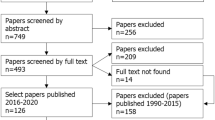Abstract
This paper arose from the work carried out for the Cullen/Uff Joint Inquiry into Train Protection Systems. It is concerned with the problem of evaluating the benefits of safety enhancements in order to avoid rare, but catastrophic accidents, and the role of Operations Research in the process. The problems include both input values and representation of outcomes. A key input is the value of life. This paper briefly discusses why the value of life might vary from incident to incident and reviews alternative estimates before producing a ‘best estimate’ for rail. When the occurrence of an event is uncertain, the normal method is to apply a single ‘expected’ value. This paper argues that a more effective method of representing such situations is through Monte-Carlo simulation and demonstrates the use of the methodology on a case study of the decision as to whether or not advanced train protection (ATP) should have been installed on a route to the west of London. This paper suggests that the output is more informative than traditional cost–benefit appraisals or engineering event tree approaches. It also shows that, unlike the results from utilizing the traditional approach, the value of ATP on this route would be positive over 50% of the time.
Similar content being viewed by others
References
Kirby MW and Capey R (1997). The air defence of Great Britain 1920–1940: an operational defence perspective. J Opl Res Soc 48: 555–568.
Kirby MW and Capey R (1997). The area bombing of Germany in World War II: an operational research perspective. J Opl Res Soc 48: 661–677.
Cook WD, Kazakov A and Persaud BN (2001). Prioritising highway accident sites a data envelopment analysis model. J Opl Res Soc 52: 303–309.
Orringer O, Tang YH, Jeong DY and Perlman AB (1999). Risk/Benefit Assessment of Delayed Action Concept for Rail Inspection. US Dept of Transport February.
Kornhaser AL, Patech DJ and Sontag MA (1994). Comparing the Risks of Transporting Chemicals by Highway and Rail; A Case Study. Transport Research Board Annual Meeting August.
Barnet A (2001). Air safety: end of the Golden Age. J Opl Res Soc 52: 849–854.
Hidden A (1989). Investigation into the Clapham Junction Railway Accident. HMSO: London.
Railtrack (1999). Network Monitoring Statement. See www.networkrail.co.uk/companyinformation/regdocuments/networkstatement1999.htm
Cullen L and Uff J (2001). The Joint Inquiry into Train Protection Systems. HSE: London.
ERTMS (2002). Towards a Better, Safer Railway System. SRA/Railway Safety: London.
Morgan MG (1981). Probing the question of technology induced risk. IEEE Spectrum 18: 58–64.
Margolis H (1997). ‘What's special about cancer? In: Ellis RJ and Thompson M (eds). Culture Matters: Essays in Honour of Aaron Wildavsky. Westview Press: Boulder.
Carthy T et al (2000). Valuation of Benefits of Health and Safety Control. Final Report, ESRC Research Programme on Risk and Human Behaviour.
Kelman S (1981). Regulating America Regulating Sweden, A Comparative Study of Occupational Safety & Health Policy. MIT: Cambridge, MA.
Mishan EJ (1971). Evaluation of life and limb: a theoretical approach. J Polit Econ 79 (4): 687–705.
Viscusi WK (1993). The value of risks to life health. J Econ Literature 31: 1912–1946.
Jones-Lee MW (1976). The Value of Life: An Economic Analysis. Martin Robertson: London.
Jones-Lee MW (2000). ATP, SPADRAM and the Cost Benefit Analysis of Rail Safety. A Report to Railtrack, LGR Joint Inquiry.
Modern Railways (2001). The railway safety risk model. Modern Railways, July 2001, p 23.
Rasmussen NC (1981). The application of probabilistic risk assessment techniques to energy technologies. Annu Rev Energy 6: 123–138.
BR (1994). Automatic Train Protection, Report from British Railways Board to Secretary of State for Transport. March 1994.
Evans AW (1999). Estimating Train Accident Risk after Ladbroke Grove. Unpublished paper, University College: London.
Atkins WS (1998). Cost–Benefit Assessment of the Provision of ATP. Report for Thames Trains Ltd.
Hendy J (2000). Amendment to Amplified Notice of Criticism of WS Atkins. Addendum to the Ladbroke Grove Rail Joint Inquiry.
AEA Technology (1996). Train Protection and Warning System: Evaluation of Costs and Benefits. Report for the British Railways Board, March 1996.
Nash CA, Hopkinson PG, Tweddle G and Preston J (1991). Evaluation of Road and Rail Projects: Issues and New Developments. Institute for Public Policy Research: London.
Evans AW (2000). Fatal Train Accidents on Britain's Main Line Railways—End of 1999 Analysis. Mimeo. Centre for Transport Studies, University College London.
DETR (2000). Transport 2010—The Ten Year Plan. DETR: London.
Author information
Authors and Affiliations
Corresponding author
Rights and permissions
About this article
Cite this article
Riddington, G., Beck, M. & Cowie, J. Evaluating train protection systems. J Oper Res Soc 55, 606–613 (2004). https://doi.org/10.1057/palgrave.jors.2601724
Received:
Accepted:
Published:
Issue Date:
DOI: https://doi.org/10.1057/palgrave.jors.2601724




